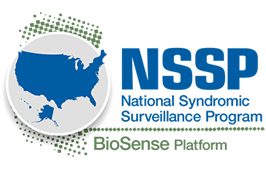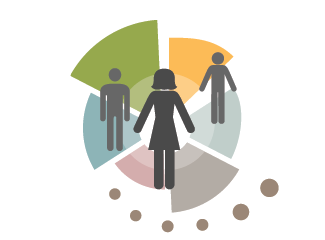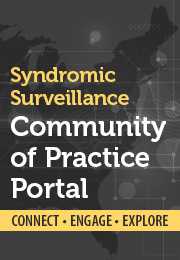NSSP Overview

The National Syndromic Surveillance Program (NSSP) promotes and advances development of a syndromic surveillance system for the timely exchange of syndromic data. These data are used to improve nationwide situational awareness and enhance responsiveness to hazardous events and disease outbreaks to protect America’s health, safety, and security. NSSP functions through collaboration among individuals and organizations at local, state, and federal levels of public health; federal agencies including the U.S. Department of Defense and the U.S. Department of Veterans Affairs; public health partner organizations; and hospitals and health professionals.
NSSP features:
BioSense Platform

To support national emergency preparedness, the U.S. Congress passed legislation and appropriated funding to the Centers for Disease Control and Prevention (CDC) to establish an integrated national public health surveillance system for early detection and rapid assessment of bioterrorism-related events. To meet this need, CDC launched BioSense in 2003. Since 2011, the focus has expanded to situational awareness for all-hazards preparedness and response. The NSSP provides syndromic surveillance practitioners access to and use of the cloud-based BioSense Platform, a secure integrated electronic health information system with standardized analytic tools and processes. These tools enable users to rapidly collect, evaluate, share, and store syndromic surveillance data. By using the BioSense Platform, health officials can analyze syndromic data to improve their common awareness of health threats over time and across regional boundaries.
Meaningful Use
The tools hosted on the BioSense Platform increase the capacity of state and local health departments to support the Centers for Medicare and Medicaid Services’ Meaningful Use program which is intended to expand the use of electronic health records. The BioSense Platform provides health departments a common electronic platform for collecting, storing, and sharing syndromic surveillance data.
NSSP Community of Practice and Collaboration with Partners

NSSP promotes a Community of Practice in which participants collaborate to advance the science and practice of syndromic surveillance. The NSSP Community of Practice includes CDC-funded grantees, nonfunded states and jurisdictions that contribute data to the BioSense Platform, public health practitioners who use local syndromic surveillance systems, CDC programs, other federal agencies, partner organizations, hospitals, healthcare professionals, and academic institutions.CDC works with partners to improve the timeliness and representativeness of the data that drive decision making and action. CDC funds the Association of State and Territorial Health Officials (ASTHO) to host the BioSense Platform. Through coordination with partners such as ASTHO, the Council of State and Territorial Epidemiologists, the National Association of County and City Health Officials, and the International Society for Disease Surveillance, BioSense Platform users provide feedback on development and use of the BioSense Platform.
About Syndromic Surveillance
Syndromic surveillance uses syndromic data and statistical tools to detect, monitor, and characterize unusual activity for further public health investigation or response. Syndromic data include patient encounter data from emergency departments, urgent care, ambulatory care, and inpatient healthcare settings, as well as pharmacy and laboratory data. Though these data are being captured for different purposes, they are monitored in near real-time as potential indicators of an event, a disease, or an outbreak of public health significance. Public health practitioners use various surveillance systems and data sources in combination with syndromic data to enhance their understanding of events. Other data sources that provide context may include school and business absentee data, poison control reports, and even social media data that may present an emergent picture of public health events.
Public Health Syndromic Surveillance Data Flow

Syndromic Data in Action
Syndromic surveillance can improve public health situational awareness by monitoring different conditions:
- Infectious disease outbreaks and pandemics (Enterovirus D68, influenza, H1N1 flu virus, Norovirus, Zika)
- Identification of reportable conditions not found by other systems (Ciguatera fish poisoning)
- Mass gatherings (Super Bowl, conventions)
- Natural and man-made disasters
- Injury (falls, bicycle-related injuries, drownings, drug overdoses)
- Chronic conditions (asthma)
- Healthcare use (oral health, medication refills).
Contact Us
Contact NSSP
National Syndromic Surveillance Program
Division of Health Informatics and Surveillance (DHIS)
Centers for Disease Control and Prevention
1600 Clifton Road NE
Atlanta, GA 30329-4027 USA
800-CDC-INFO (800-232-4636)
nssp@cdc.gov
Contact CDC
Centers for Disease Control and Prevention
1600 Clifton Road NE
Atlanta, GA 30329-4027 USA
800-CDC-INFO (800-232-4636), TTY: 888-232-6348
- Page last reviewed: May 22, 2017
- Page last updated: May 22, 2017
- Content source:




 ShareCompartir
ShareCompartir